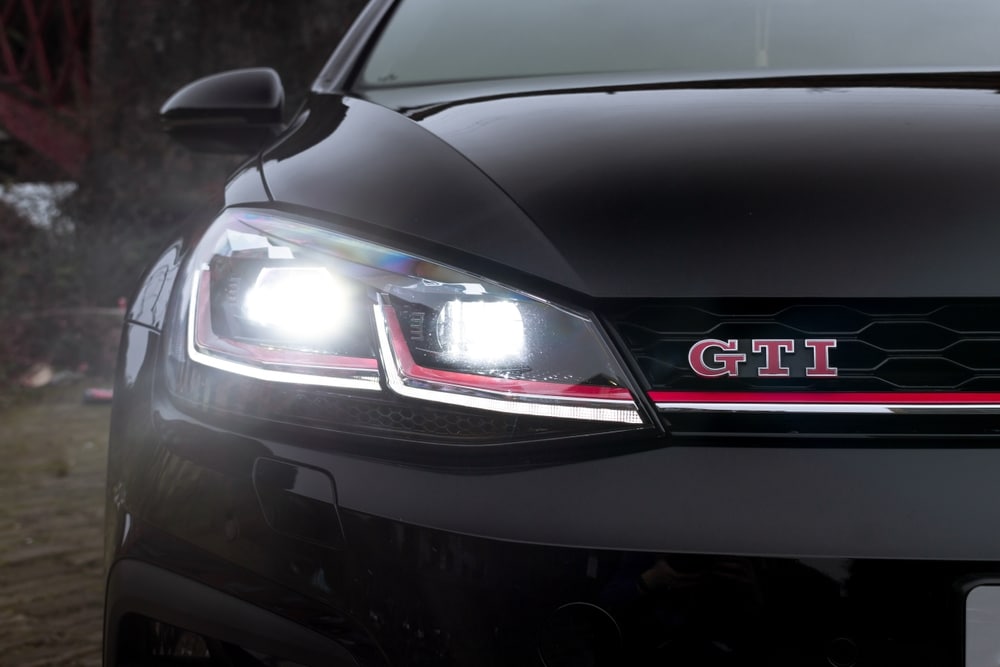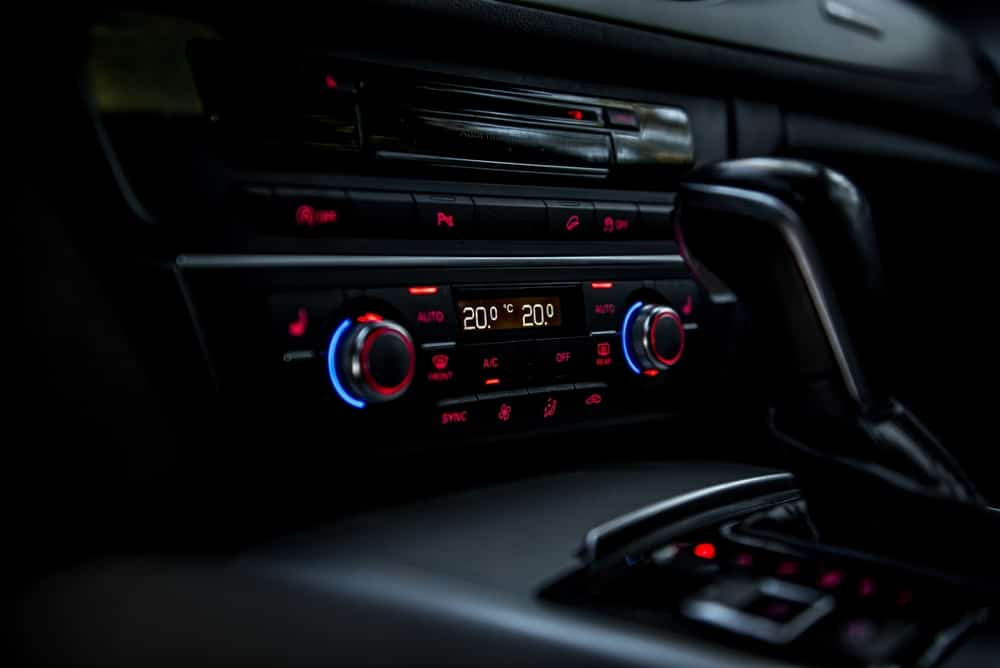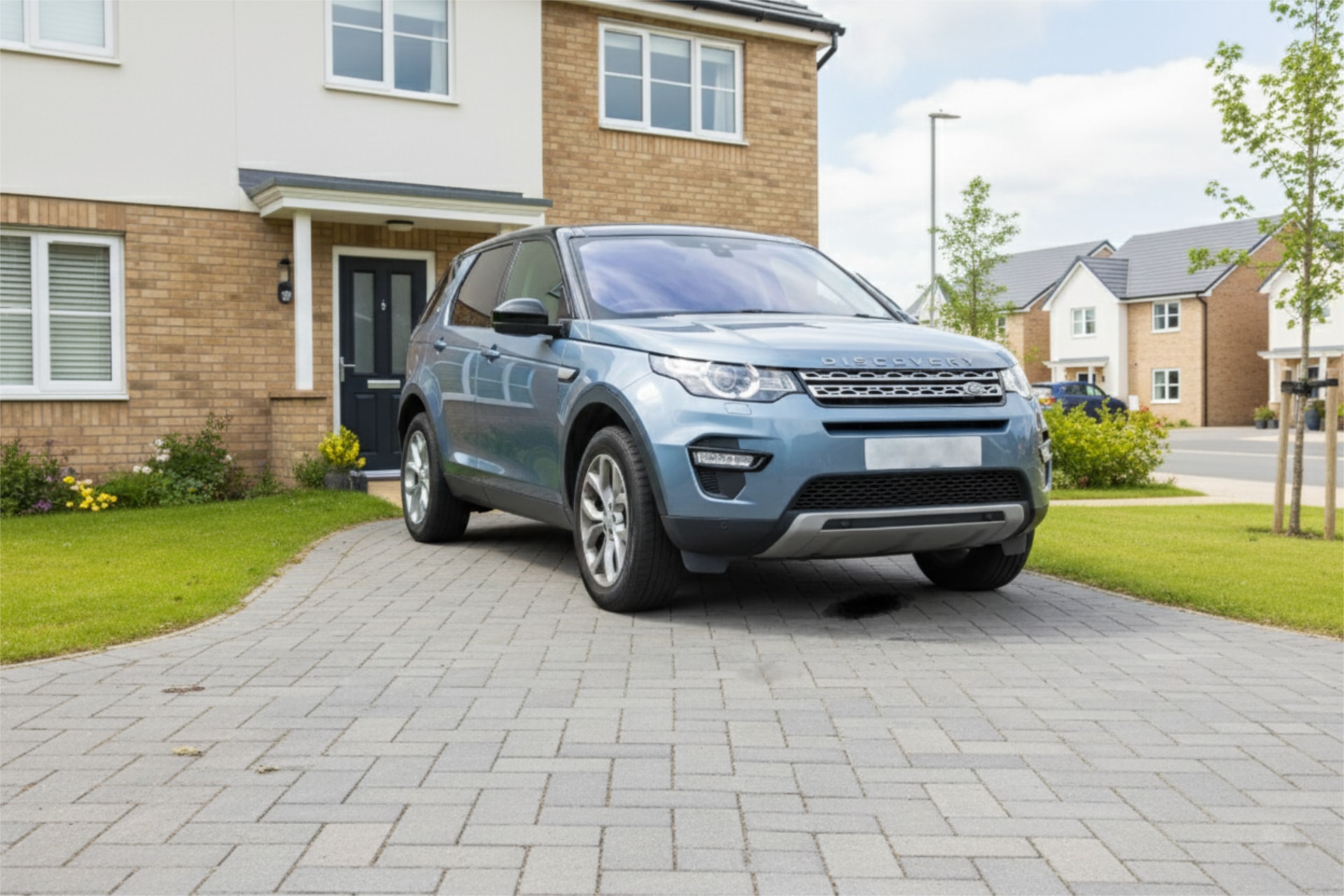Anti-lock Brakes
You’re driving through Brownhills when traffic ahead suddenly slams to a stop. You hit the brakes hard. But instead of slowing smoothly, the tyres screech, the wheels lock, and the car skids forward. The steering goes light in your hands. And just before the impact, you think: “I should’ve had that ABS light looked at.” It had been on for days, but you hadn’t got round to booking it in.
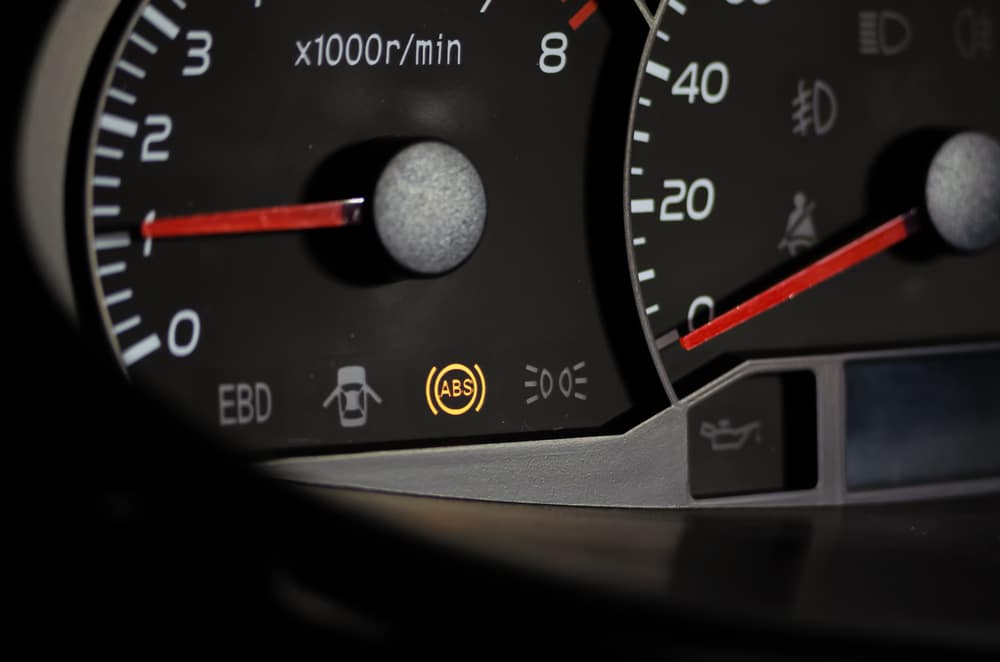
Your car’s anti-lock braking system is designed to stop situations like this from becoming accidents. It doesn’t just help you slow down — it helps you stay in control while doing it. Without it, you risk not only longer stopping distances, but also the loss of steering when you need it most.
At Fitch Autos in Brownhills, we’ve helped drivers from Walsall, Cannock, and Aldridge resolve ABS faults before they become serious. This system relies on rapid communication between sensors, hydraulics, mechanics and control modules. And when one part goes wrong, the whole process can fail.
In this blog, we’ll break down what ABS actually does, how it protects you in a braking emergency, and what to do if your ABS light stays on.
Let’s take a closer look.
What Anti-Lock Brakes Are Designed to Do
The anti-lock brakes system, or ABS, is built to stop your wheels from locking up when you brake hard. It isn’t about bringing the car to a stop faster in every situation — it’s about helping you stay in control while doing it.
If ABS isn’t functioning and you hit the brakes suddenly, one or more wheels can lock up entirely. When that happens, the tyres lose grip. And once traction disappears, so does your ability to steer. Whether you’re trying to avoid a vehicle, a pedestrian, or an obstacle in the road, you may find yourself unable to change direction at all. ABS prevents this by making rapid adjustments to brake pressure at each wheel, keeping them turning just enough to hold contact with the road.
It’s a system designed not just to help you stop but also to help you stay in control of your steering when it matters most.
How Anti-Lock Brakes React in Real Time During Braking
Today’s ABS systems are constantly gathering data in the background, ready to act the moment they detect danger. You won’t notice them under normal conditions, but the instant a wheel begins to lock, the system kicks in.
Each wheel is equipped with a sensor that monitors how fast it’s rotating. This information is passed to the ABS control module, which watches for sudden differences between wheel speeds. If one wheel starts slowing down too fast — a sign it’s about to lock — the ABS system responds by pulsing the brake pressure at that wheel only. It eases off just enough for the tyre to regain grip, then reapplies pressure once traction returns. This sequence can repeat many times per second, far faster than any driver could manage manually.
When ABS activates, you may feel a vibrating or pulsing sensation through the brake pedal. That’s normal. It means the system is actively stopping your wheels from locking and helping you maintain steering control.
But if a sensor, valve, modulator, or part of the wiring fails, the ABS function can stop altogether. That’s when your ABS light comes on. If it does, call Fitch Autos in Brownhills on 01543 452630.
Where the ABS System Lives and What Each Part Does
Your anti-lock brakes system is made up of several core components, each working together to prevent your wheels from locking during hard stops. Here’s where you’ll find them and how they function:
- Wheel speed sensors – Positioned at each wheel, typically near the hub or brake disc. These sensors track how fast the wheel is rotating and send constant updates to the ABS control module.
- ABS control unit (ECU) – Usually mounted in the engine bay, this is the brain of the system. It receives signals from all four sensors and calculates when and where brake pressure needs adjusting.
- Hydraulic modulator or ABS pump – Also located under the bonnet, this component uses electronically controlled valves and a pump to regulate brake pressure rapidly and precisely during ABS operation.
- Brake valves and hydraulic lines – These are built into the modulator. They open and close in fractions of a second to hold, reduce, or restore pressure at each wheel, keeping the tyres just short of locking up.
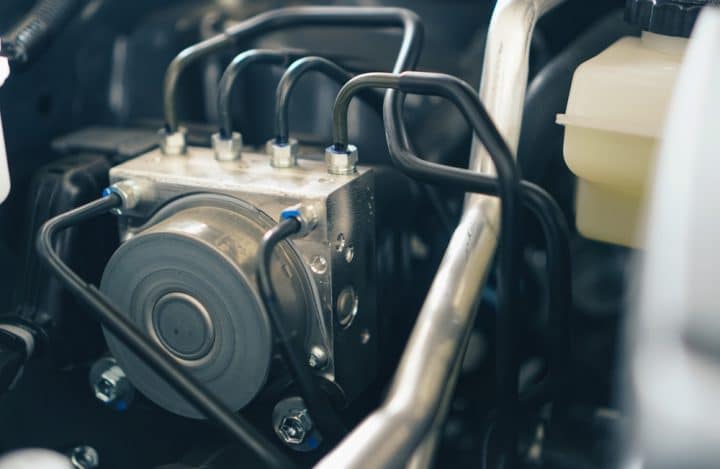
For more insights into how your brakes function, see our other guides on Brake Pads, Brake Discs, and The Braking System Explained.
The Stability Systems That Depend on ABS to Work Properly
Your anti-lock brakes system does more than just prevent wheel lock-up. It forms the foundation of several advanced safety technologies found in most modern vehicles — systems that help you stay stable and secure in a range of driving conditions. And every one of them depends on ABS to function correctly.
Here’s how:
Electronic Brakeforce Distribution (EBD) – This system balances braking force between the front and rear wheels, depending on how your car is loaded. It prevents rear wheels from locking up first during heavy braking, especially when weight shifts under load.
Traction Control System (TCS) – When the wheels begin to spin on a slippery surface during acceleration, TCS applies brake pressure to the slipping wheel and reduces engine power, helping you regain traction and move off safely.
Electronic Stability Programme (ESP) – If your vehicle begins to slide, ESP steps in by braking individual wheels to bring the car back on course. It’s especially effective during sudden swerves or when cornering on poor road surfaces.
All of these systems rely on accurate real-time data from the ABS. If there’s a fault with any part of the ABS components, these technologies may also fail or become unpredictable.
At Fitch Autos in Brownhills, we don’t just diagnose ABS problems in isolation — we look at how the fault might affect the wider stability network. If your ABS light is on or you’ve noticed handling issues, call us on 01543 452630 and we’ll carry out a complete system check.
What Can Interfere with ABS Functioning
ABS is there to support you in critical moments — but like any system, it relies on everything working correctly. If something disrupts how the system reads data or adjusts pressure, that safety support can vanish in seconds.
The condition of the road plays a big role. On surfaces like ice, snow or gravel, ABS can still operate, but it can’t compensate for the lack of tyre grip. Steering support will remain, but stopping distances may still increase, which is why caution remains essential even with ABS active.
There are also mechanical and electrical issues to consider. If an ABS sensor misreads speed or if the modulator can’t react quickly enough, the system might not activate when needed. In many cases, this is when the ABS warning light appears on your dashboard.
At Fitch Autos in Brownhills, we know how quickly a minor fault in the ABS system can affect your ability to stay in control. If your ABS light is on, or if braking just doesn’t feel right, it should not be ignored. Call us on 01543 452630. We’ll check every component and make sure your system is ready to respond.
Signs Your ABS Might Be Failing
When ABS stops working properly, your standard brakes may still feel normal, until you need that added support and it isn’t there.
These are the key signs to watch for:
The ABS warning light won’t switch off
A brief appearance of the ABS light when starting your car is normal. But if the light stays on while driving, the system has likely detected a fault and may have shut itself down. This means the anti-lock function is no longer active, and that’s a serious safety issue. Call Fitch Autos in Brownhills on 01543 452630 and let our technicians take a look.
No ABS response when braking heavily
If you slam on the brakes and the wheels lock — or if you don’t feel any pulsing through the pedal — it could mean the ABS isn’t working. That pulse is your cue that the system is intervening to stop a skid.
Other warning lights alight
Sometimes, an issue with the ABS can trigger other dash lights, too, especially the brake warning light. If both are showing, your car needs checking urgently.
If you notice any of these symptoms, contact Fitch Autos. We’ll carry out a full ABS system diagnostic and identify the root cause before it puts your safety at risk.
Why You Should Never Ignore Your ABS or Brake Warning Lights
It might be tempting to put off a warning light if everything else seems normal. But when it comes to ABS, that’s a risk not worth taking.
If your ABS light is on, the system has already shut itself down. That means no pressure control, no anti-wheel-lock support, and no assistance in a sudden brake situation. Your regular brakes may feel fine, but the backup you’d expect in an emergency won’t be there.
There’s another factor to consider: your MOT. A car will fail its test if the ABS warning light is illuminated. And if the standard brake warning light is also showing, that’s a more serious safety issue that needs resolving fast.
At Fitch Autos in Brownhills, we recommend acting early — before a warning light turns into a real hazard. Our team will quickly identify the fault and get you safely back on the road.
ABS Warning Light On? Book with Fitch Autos Today
Your ABS isn’t just a convenience; it’s a safety-critical system that supports steering and stability when braking suddenly. If it fails, the impact can be immediate and dangerous.
At Fitch Autos in Brownhills, we specialise in diagnosing and repairing ABS faults with precision. Our technicians are trained to work on modern braking and safety systems, using advanced diagnostic tools to find faults quickly and accurately.
Here’s what you get when you book with us:
- Expert technicians experienced in ABS repairs and diagnostics
- Clear, honest advice from a trusted local team
- 12-month parts and labour guarantee on all work
- Free courtesy car while your vehicle is with us
- Support from a well-established Brownhills garage serving Walsall, Cannock and Tamworth
Don’t ignore your ABS light. Call 01543 452630 to book in with Fitch Autos — and stay in control when it counts.
